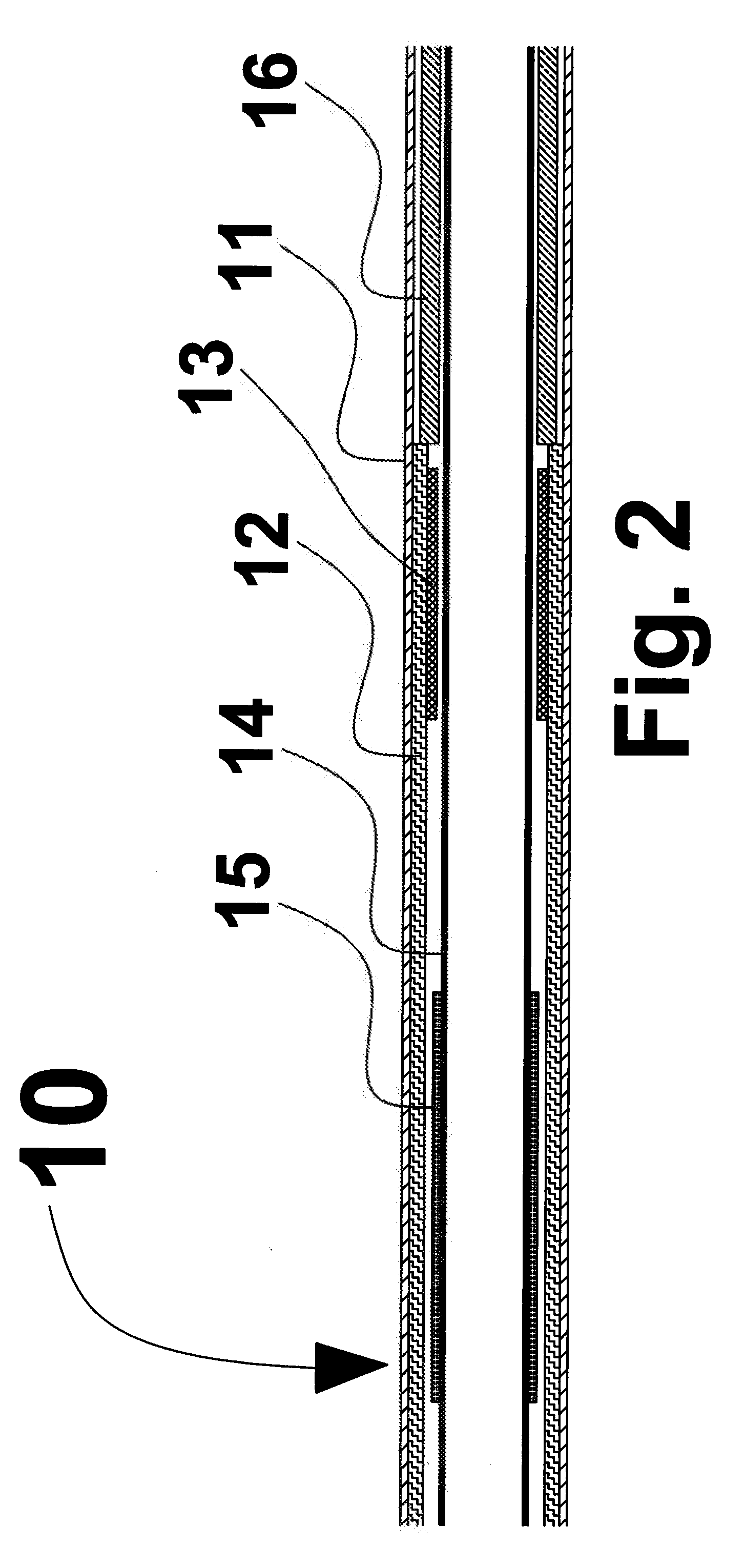Reconstrainable stent delivery system
a stent and stent technology, applied in the field of constraining stents and delivery systems, can solve the problems of stents that foreshorten an appreciable amount, stents that are placed in incorrect or suboptimal locations are subject to more difficulties, stents may be subject to substantial flexing or bending, axial compression and repeated displacement,
- Summary
- Abstract
- Description
- Claims
- Application Information
AI Technical Summary
Benefits of technology
Problems solved by technology
Method used
Image
Examples
Embodiment Construction
[0048]Self expanding stent delivery system 10 of the present invention is shown in FIG. 1. The outer tube which is also known as outer sheath 11, constrains stent 12 in a crimped or radially compressed state. The inner members can be comprised of multiple components including distal tip 8, guide wire tube 14 and pusher 16 to react the axial forces placed on the stent as outer sheath 11 is retracted to deploy stent 12. Pusher 16 can also act as a proximal stop. Other elements of self expanding stent delivery system 10 can include luer lock hub 6 attached to the proximal end of pusher 16 and handle 3 attached to outer sheath 11. Handle 3 incorporates luer port 4 such that the space between the inner members and outer sheath 11 can be flushed with a solution, such as a saline solution, to remove any entrapped air. Pusher 16 can be formed of a composite structure of multiple components, such as a stainless steel tube at the proximal end and a polymer tube inside outer sheath 11.
[0049]St...
PUM
 Login to View More
Login to View More Abstract
Description
Claims
Application Information
 Login to View More
Login to View More - R&D
- Intellectual Property
- Life Sciences
- Materials
- Tech Scout
- Unparalleled Data Quality
- Higher Quality Content
- 60% Fewer Hallucinations
Browse by: Latest US Patents, China's latest patents, Technical Efficacy Thesaurus, Application Domain, Technology Topic, Popular Technical Reports.
© 2025 PatSnap. All rights reserved.Legal|Privacy policy|Modern Slavery Act Transparency Statement|Sitemap|About US| Contact US: help@patsnap.com



